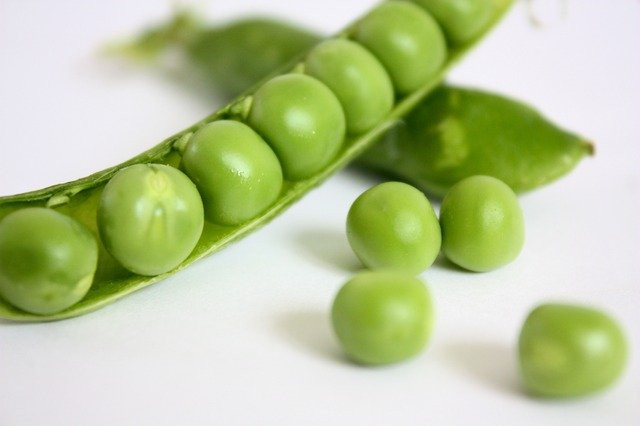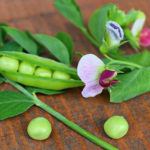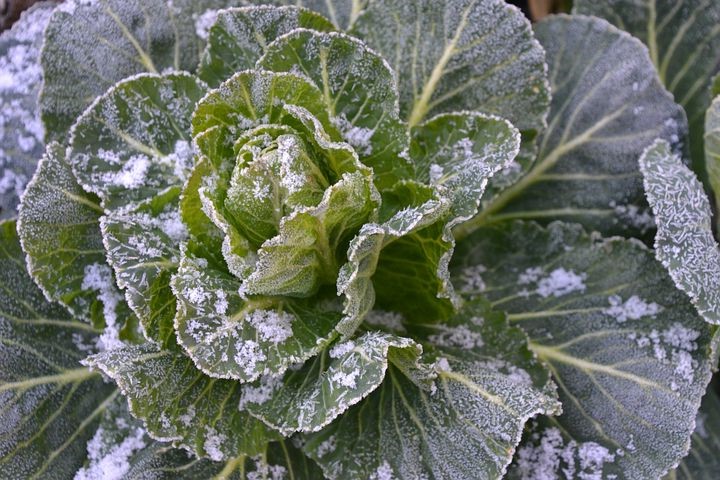How to Grow Peas
Grow peas and experience sweet freshness right from the garden. The sugar in peas begins to turn to starch immediately after being picked. This is why homegrown peas are so good to eat right off the vine, when they are the sweetest. The whimsical flowers of white to pink -purple are welcome early Spring blooms too.
What Are The Differences Between Garden, Snap And Snow Peas?
Garden peas are available in both bush and climbing varieties. Although bush peas bear for a shorter period than pole peas, they don’t require support. Unlike garden peas, both snap and snow peas have edible pods. Snap pea pods are sweet and crunchy; some varieties may also be shelled. Snow peas, common to Oriental cuisine, are harvested when still flat-podded.
Where To Plant Peas
A sunny spot protected from wind is ideal for peas. They do best in loamy organic-rich soil that drains well. Loosen winter-compacted soil and mix in compost prior to planting if available. Avoid high nitrogen because this will promote lush leaves but fewer peas. They like even moisture but not being water-logged.
Be sure that they won’t shadow any other plants or that they won’t be shadowed by other plants that emerge in the spring. They like the sun and cool air temperature.
How To Plant Peas
Peas are what are referred to as cool-weather crops. They are able to be started early in the season and grow best in milder cooler temperatures, even tolerating mild frost. For this reason, peas can be planted as soon as the ground can be worked early in the spring. This is typically 4-5 weeks before the last frost date of your area.
Plant peas in the fall 8-10 weeks before the first expected frost date for your area. Planting peas in the fall can be a bit trickier to estimate timing because first frost dates can vary from year to year.
To get a jump on early-spring planting of peas, prepare a bed for your first spring peas the fall before. In late winter to spring, lay black plastic over the soil several weeks before planting to warm the soil to at least 40 degrees F, ideally 60 – 80 degrees F. Remove plastic when planting pea seeds.
Look at the back of the seed package for the spacing requirement for the peas you are planting to determine the ground space you need. Use a hoe and dig a straight row about 6” wide x 1” deep. Mark the 4 corners of the trench with stakes, then place seeds on the soil per spacing requirements. If a seed is broken, place 2. You can thin seedlings later if needed. Better to have too many plants come up and have to thin them, than waste time from not having planted enough.
Use row cover to protect pea seedlings from extreme cold and frost until daytime temperatures are in the 60’s and nights stay above freezing. Peas can tolerate limited temperatures 29 – 30 degrees F before damage occurs.
How To Support Peas
When pea vines are supported so they grow upright, it’s much easier to harvest the pods. Supports also allow for air circulation, and keeps plants clean after heavy rains.
A square mesh net trellis secured by stakes works well for supporting peas. Tendrils easily find places to grab on to vertically and horizontally.
Trellis peas by pounding tall stakes firmly into the soil at the ends of the row or every 10 – 15 feet. Stretch the netting from end to end and secure with stakes so netting is stretched tight to support the vines. Nylon netting is ideal for strength, weather durability and can be cleaned and used year after year. Square netting gives peas the ability to find horizontal and vertical locations to wrap tendrils onto as they climb. This helps the vine to climb more evenly upwards as it grows.
As the seedlings emerge, they will naturally reach for whatever is closest to them. It’s ok if they also use each other to support themselves. If too many are crowding together, gently re-direct them but avoid forcing them and breaking the tendrils. They are sensitive to being handled so don’t over-do it. They have brittle stems that can break easily when top-heavy with pods.
It is not necessary to only use the row method to grow peas. Vining peas are super choices for small spaces, because they can be grown on narrow supports to utilizing vertical space. Tepee, A-frame or box style supports work well too.
After heavy rains or wind, check to see if stems have been blown away from support, and gently guide by placing tendrils next to the closest support. No need to try to wrap the tendril onto it – they will find it on their own. If a stem is bent but leaves are not withered, rather than straighten it back to where it was, guide it to support nearest the end of the vine, even if it is another pea plant. Often a bent stem will continue to grow if not disturbed. Cut it off at the bend if it withers.
Since peas will fizzle out when temperatures rise for an extended period of time, plan to use the space for other plantings. When pod production reduces, and leaves start to lose vibrancy, it will be time to remove the plants. Peas are nitrogen-rich so add them to your compost pile.
How To Harvest Peas

When to pick peas will depend on what you want from them and the variety you have planted. Some prefer to eat the whole pod before the peas are substantially developed. Some only want to harvest for the peas inside. Either way, you should harvest the peas daily to catch them at their prime and to encourage vines to keep producing.
Be sure to look at the vines from different angles – pods camouflage among the leaves quite easily. Gently reach inside vines so as not to disturb the tendrils. Hold the stem at the top of the pea pod with one hand and with the other snap the pod sideways to remove, or use scissors to cut.
Can Peas Be Grown In Containers?
If you don’t have room to grow peas in the ground, they can also be grown in a container on a sunny patio or balcony.
Iona Shelling Petite Pea is a variety with short vines to 28″ that do not require staking. Patio Pride Pea is a variety that spreads not wider than 12″, making it ideal for a pot 8″ wide or greater.
Potential Problems With Peas
Germinating Peas
Excessive moisture in early spring may cause seeds to rot before they have a chance to germinate. Germination is a combination of time and soil temperature, so the days to germination on your seed packet is just a guideline. If in doubt, try digging up one seed to see if it’s starting to sprout or if it’s soft and deteriorated. Try a second planting if necessary. Some prefer to soak the seed overnight before planting, to give them a boost for quick germination.
Peas And Excessive Dryness
Peas will quickly react to dryness by slowing growth. Leaves will fade and droop, flower production will slow. If left too long, the plants will not revive in enough time before the summer heat sets in.
Weeds will steal nutrients and moisture, so keep weed growth down, and don’t disturb the roots when tending to weeds. Once the plants are established, keep the soil moist with regular watering or mulch. Ground should be kept moist but not wet.
Rodents
Rabbits, moles, gophers and voles will either chew the leaves or bite the plant off at the stem. Protect with repellents or buried fencing around the border.
Insects And Mildew
Aphids or Thrips damage and cause distorted leaves, so inspect plants often for signs of infestation.
Warm weather or over-crowding can bring on powdery mildew, which covers the plant with a downy, white fungal coating. Look for cultivars resistant to Fusarium wilt and powdery mildew to avoid this problem.
Dogs Love Peas
Dogs don’t know how to properly snip the pods off so whole branches get pulled off and remaining stems get damaged. So be aware that your four-legged pups might find peas a tasty treat too. But don’t worry if they do eat them – minimal amounts of peas are ok for a dog to eat and are nutritious for them. Teaching them how to properly snip the pods off is the hard part.
Explore More




